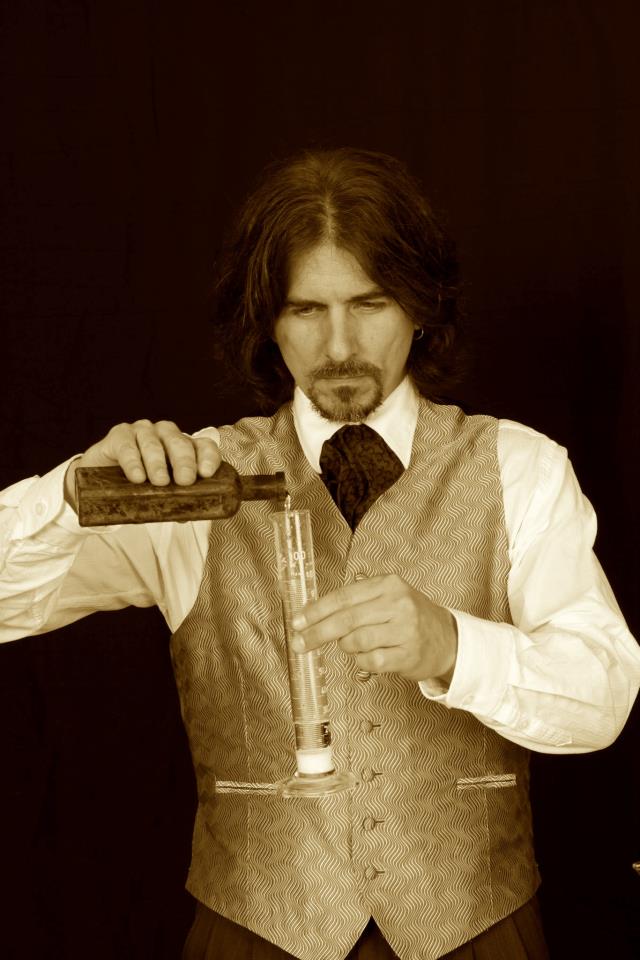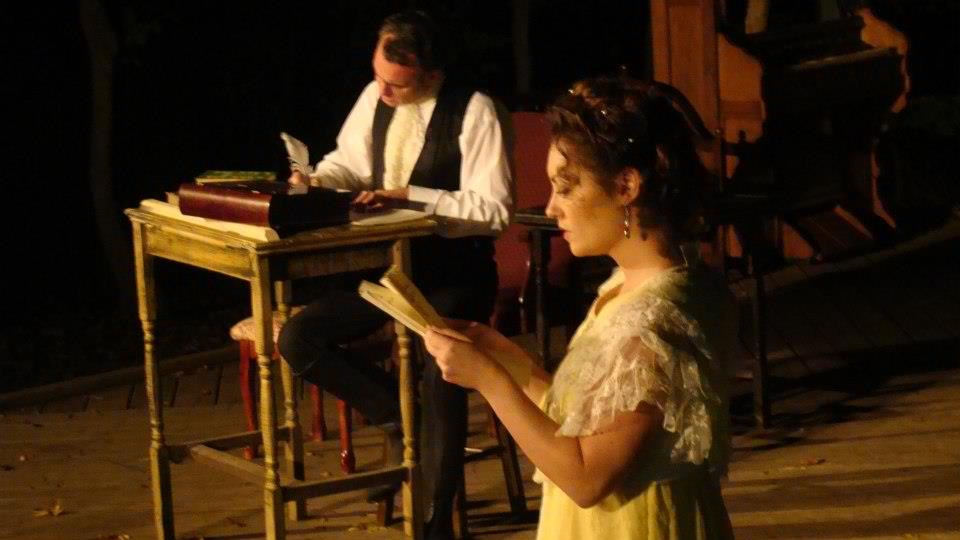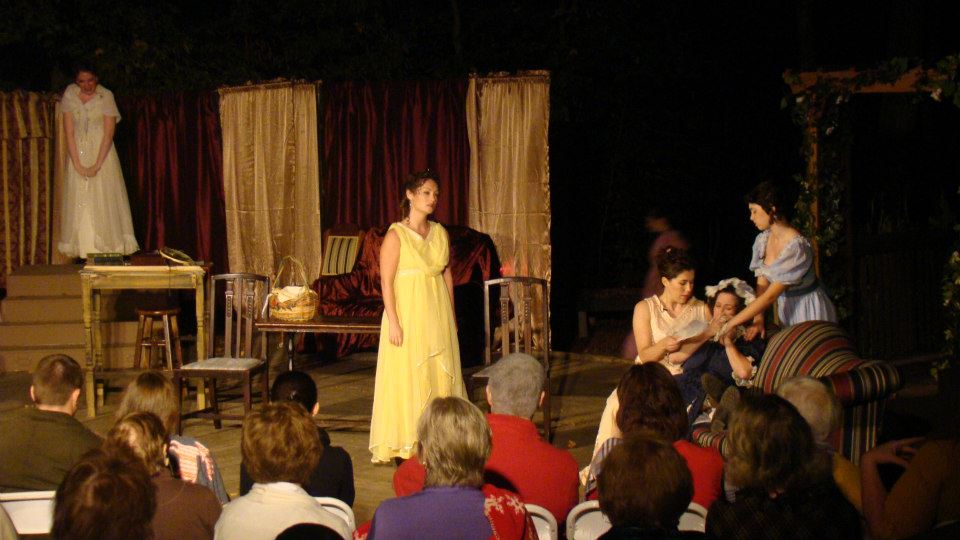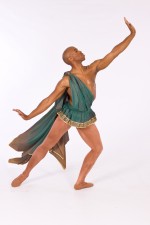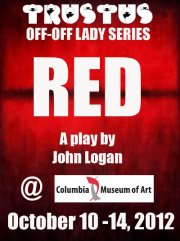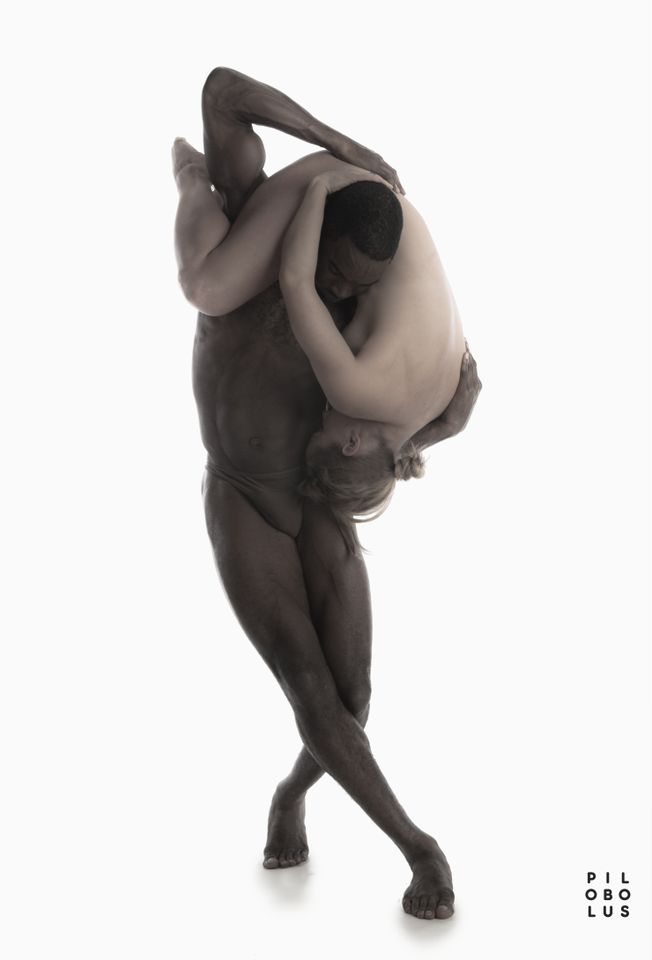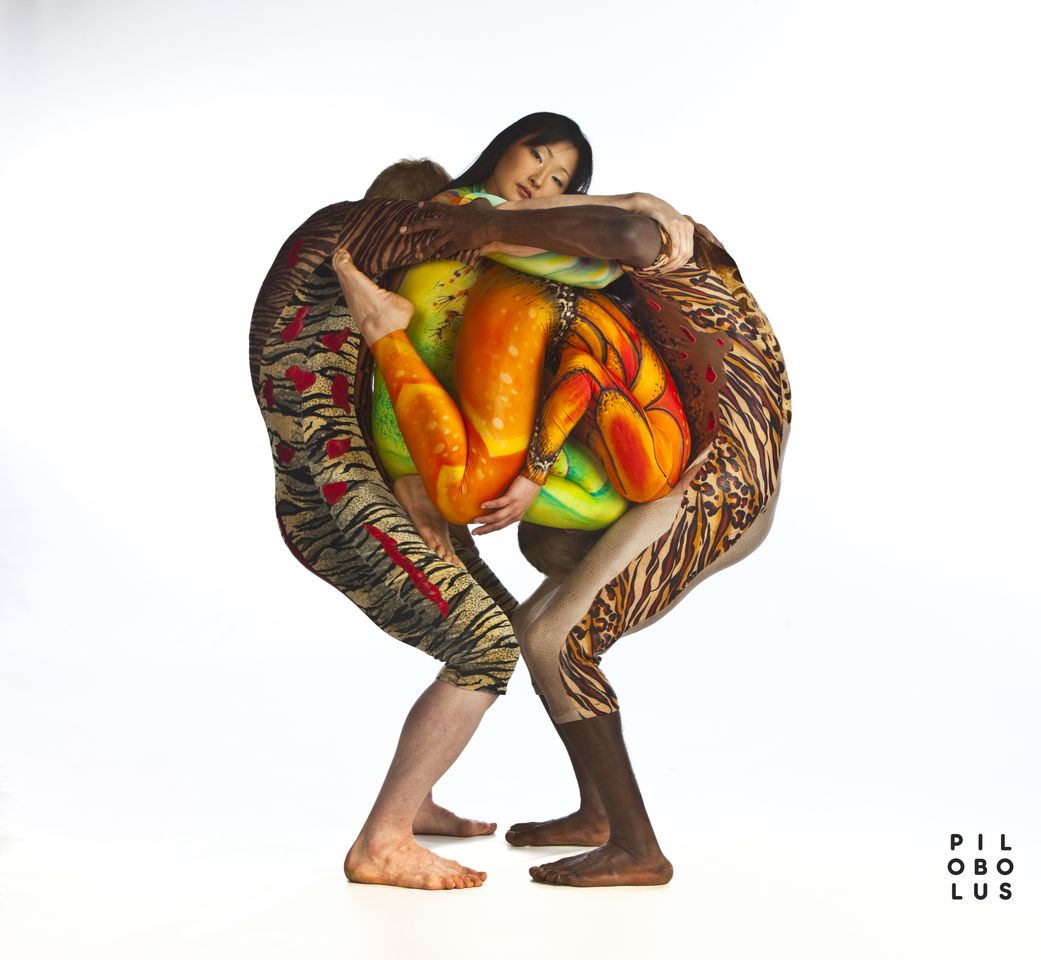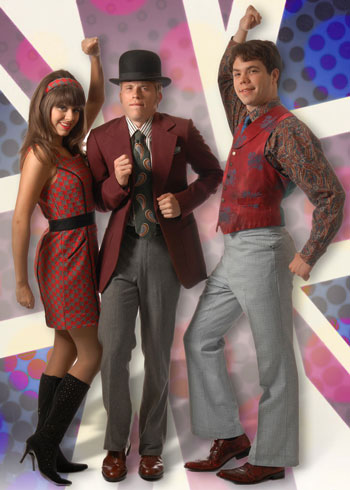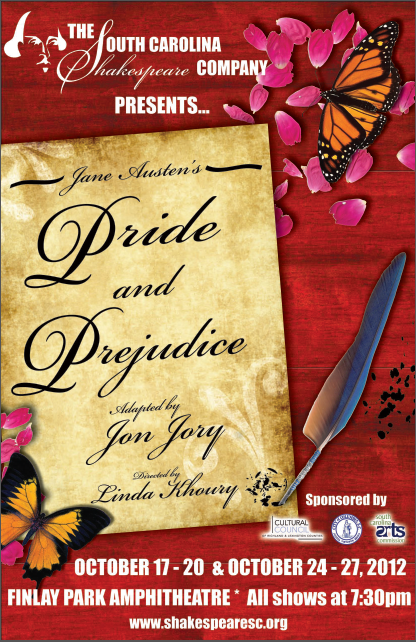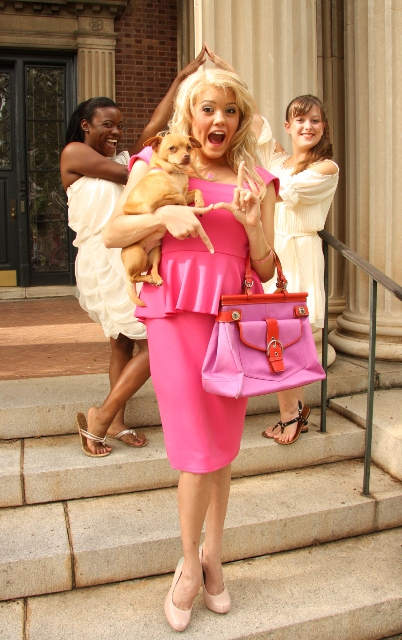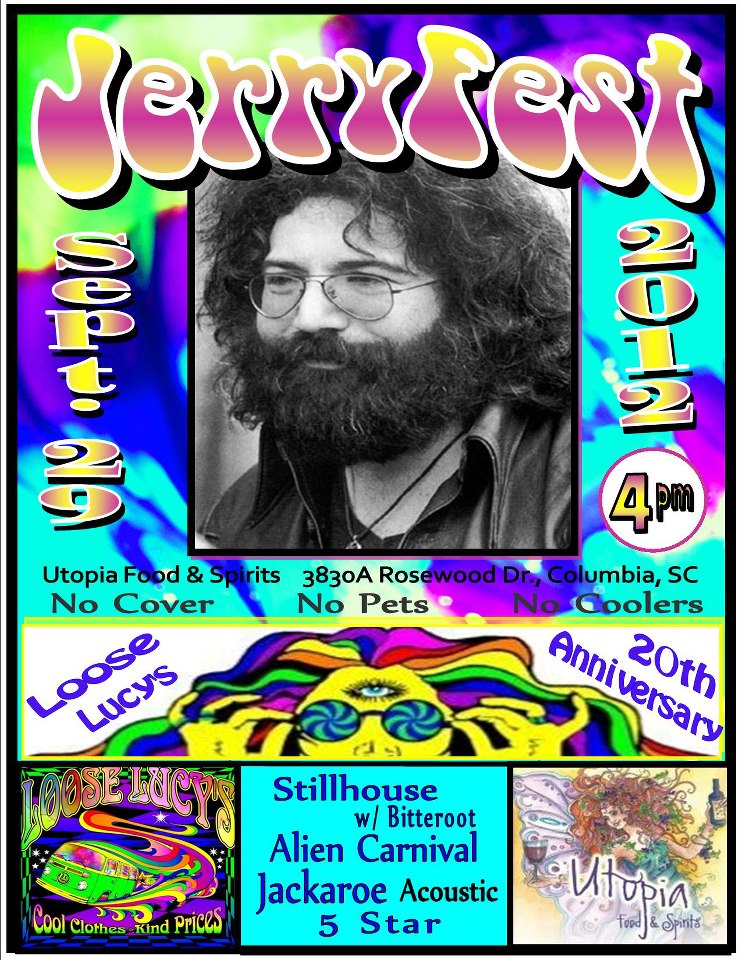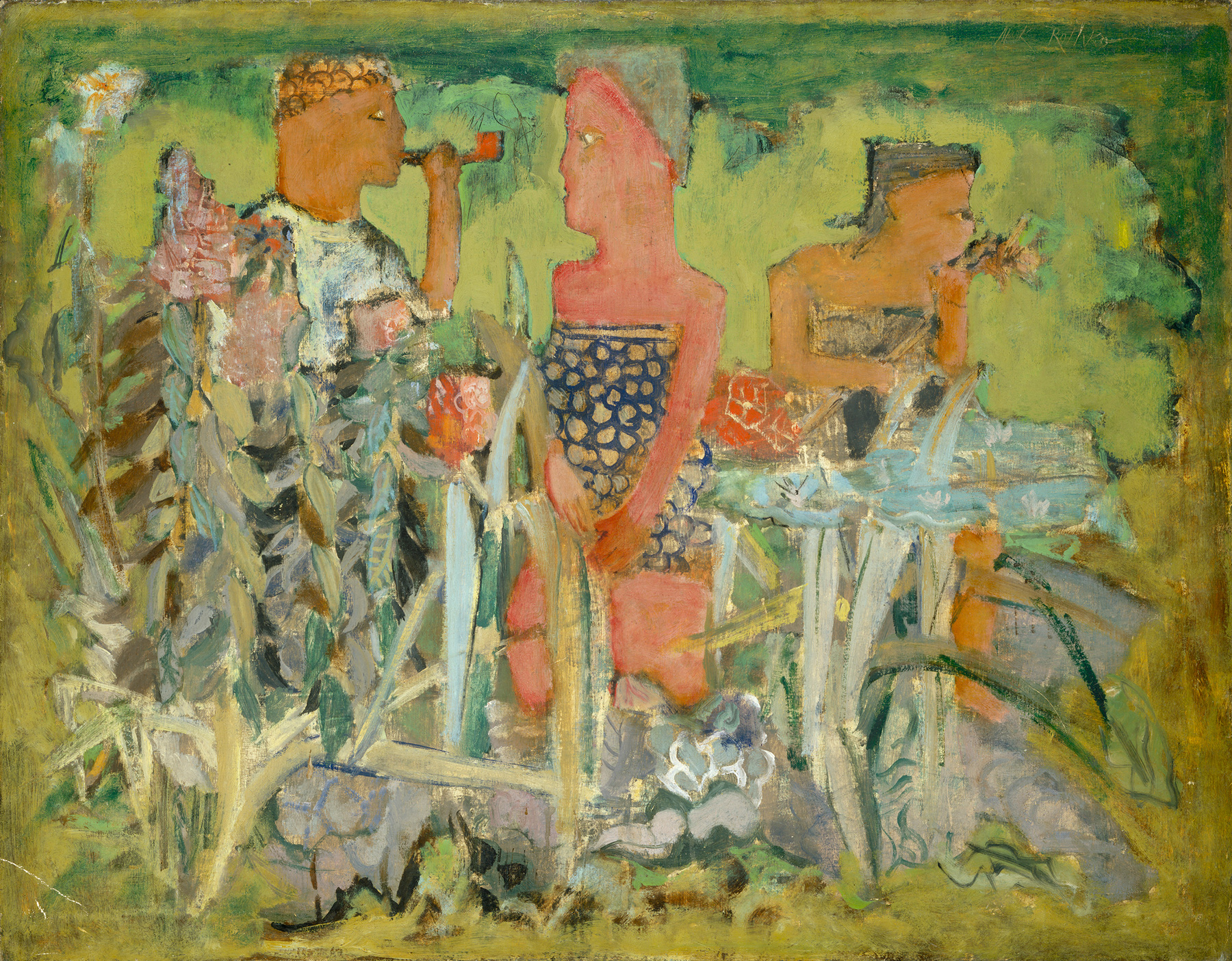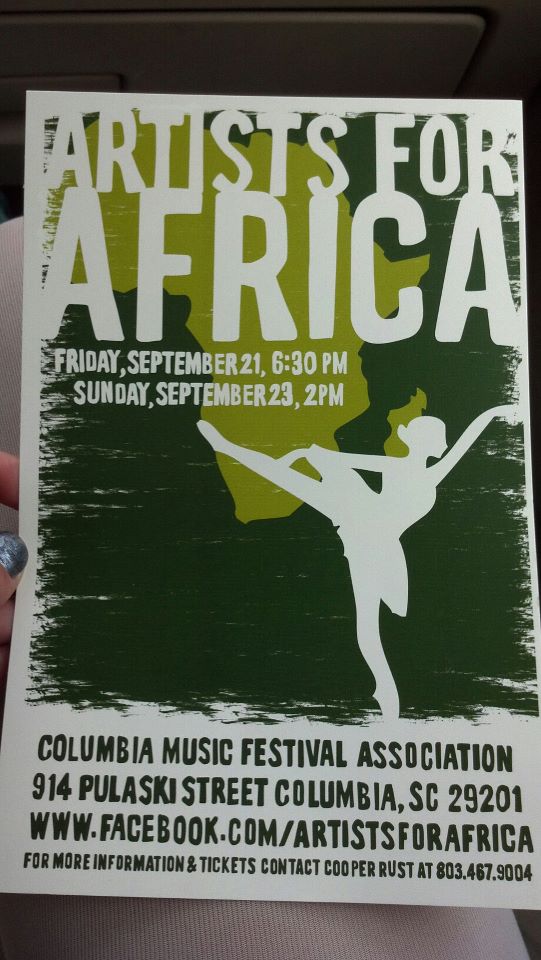Jasper Magazine is pleased to announce the finalists for Jasper 2012 Artist of the Year in the categories of Dance, Literary Arts, Music, Theatre, and Visual Arts.
~
Dance: Brooklyn Mack, Regina Willoughby, and Marcy Jo Yonkey-Clayton
Literary Arts: Kwame Dawes, Julia Elliott, and Dianne Johnson
Music: Aaron Graves, Morihiko Nakahara, and Josh Roberts
Theatre: Chad Henderson, Vicky Saye Henderson, and Shelby Sessler
Visual Arts: Thomas Crouch, Lyon Hill, and Susan Lenz
~
The above 15 artists were among a number of artists nominated by their peers and fans. Based on the information submitted with the nominations, a panel of judges selected the top three artists in each category to compete for the title Jasper 2012 Artist of the Year.
Now the fun begins! You’re invited to vote for your choice for Jasper 2012 Artist of the Year in each of the five categories by visiting the Jasper website. There, you’ll find summaries of each artist’s accomplishments for the period of September 15, 2011 – September 15, 2012.
The winners of Jasper 2012 Artist of the Year in Dance, Literary Arts, Music, Theatre, and Visual Arts will be announced at 7 pm November 15, 2012 at the release of Jasper Magazine V. 002, N. 002 at City Art during Vista Lights. All 15 artists will be featured in the same issue of Jasper Magazine.
For more on the finalists, please continue reading.
Jasper 2012 Artist of the Year Finalists
Dance

Brooklyn Mack
Although Brooklyn Mack’s full time position in the Washington Ballet doesn’t allow him as much time in the SC Midlands as he once had, the dancer still considers Elgin his home and, despite a career that finds him dancing across the continents, the Columbia area is where you’ll find him during almost any time off. Nominated by Dance Magazine as one of the 25 young dancers to watch in 2012, Mack was the first African American male to win the Gold Medal at the 2012 Varna International Ballet Competition. He won the gold medal at the 2nd Annual Boston International Ballet Competition and the Grand Prix at the 3rd International Istanbul Ballet Competition, both in June 2012. An interview on National Public Radio, an invitation to dance at the Kremlin Palace, and guest solo artist invitations and performances in Indiana and at Jackson, not to mention performances with Columbia Classical Ballet and Washington Ballet, round out a busy year for Mack.

Marcy Jo Yonkey-Clayton
Recipient of the 2012 South Carolina Arts Commission Fellowship Award for Dance Choreography, Yonkey-Clayton created the dance, The More We Get Together (performed in Columbia, SC and Albany, GA), as well as Get On It, performed at the Columbia College Fall 2011 Faculty Concert. She danced in the following performances: Cow Beans & Cool Water, Angel Train, The More We Get Together, and the Columbia College Dance Lab’s Third Annual Campus Walking Tour of Dance. An assistant professor at Columbia College, Yonkey-Clayton teaches emerging dance artists, choreographs and performs with the Power Company, and the CCdanceLab. This year she taught at the American College Dance Festival in Albany, GA, the SC Alliance for Health, Physical Education, Recreation and Dance in Myrtle Beach, and the Greenville Fine Arts Center, as well as for Richland One Dance and Columbia College Summer Camp. She completed a Choreography Residence at Ridge View High School, serves as editor awards committee member for the South Carolina Dance Association.

Regina Willoughby
Ballerina with Columbia City Ballet, Regina Willoughby danced the following starring roles with the company between September 2011 and 2012 – Lucy in Dracula, Sugar Plum Fairy and Snow Queen in The Nutcracker, Juliet in Romeo and Juliet, (a role she says she has dreamed of dancing for 20 years!), and Aurora in Sleeping Beauty (a role she says she felt she needed to conquer before she retires). She also appeared with Ballet Spartanburg’s Dance Synergy III and earned the American Ballet Theater Teacher Training Curriculum certification in NYC.
~~~
Literary Arts

Kwame Dawes
Earlier this year, Kwame Dawes joined the ranks of Ansel Adams, Langston Hughes, Henry Kissinger, Derek Walcott, and Eudora Welty, as winner of a Guggenheim Foundation Fellowship. Dawes was one of 181 scholars, artists, and scientists selected from nearly 3000 applicants. In March he received the Poets & Writers magazine Barnes and Noble Writers for Writers Award, which recognizes writers who have given generously to other writers. Even though Dawes moved to the University of Nebraska in Lincoln last year to become the editor of the renowned literary magazine Prairie Schooner, the Jamaican poet says he still thinks of himself as a South Carolinian, and much of his work has been about getting South Carolina writers in print. Within the past year, Dawes published Home Is Where: An Anthology of African American Poetry from the Carolinas, an essential collection of contemporary African-American writers from South and North Carolina published by Hub City Press of Spartanburg and launched at the Columbia Museum of Art last fall. He also published Jubilation: An Anthology of Poetry Celebrating Fifty Years of Jamaican Independence (Peepal Tree, 2012) and his groundbreaking poetry and journalism project, Voices of Haiti, which won the National Press club’s 2011 Joan Friedenberg Award for Online Journalism, is now available as an I-book from the Pulitzer Center for Crisis Recording. Two books forthcoming this fall also suggest his continuing commitment to South Carolina voices: Seeking: South Carolina Poets Responding to the Art of Jonathan Green (USC Press, fall 2012), and Seven Strong: South Carolina Poetry Prize Winners (also USC Press, fall 2012), selections from the state poetry prize series founded in by Dawes in 2005.

Julia Elliott
“Totally original” is what the awards committee for the Rona Jaffe Foundation Writer’s Award said of Cayce writer Julia Elliott, or more precisely, “incredibly imaginative, sharply observed, and totally original.” Elliott was one of six women writers selected this fall for the $30,000 award, which is given annually to writers who demonstrate excellence and promise early in their careers. Two short stories were published this spring in Conjunctions and in Tin House, journals known for experimental literary fiction, and her story “Regeneration at Mukti,” originally published in Conjunctions, received a Pushcart Prize and will appear in the 2013 anthology later this year. An assistant professor English and Women’s and Gender Studies at USC, Elliott is currently finishing The New and Improved Romie Futch, a novel about a SC taxidermist, as well as working on a second novel about primatologists and baboons, which she studied in-depth at the NC Zoo in Asheboro in 2011 as recipient of a creative arts grant from USC.

Dianne Johnson
Last year, Columbia city officials chose Dianne Johnson’s All Around Town: The Photographs of Richard Samuel Roberts, originally published in 1998, for the city reading initiative Together We Can. As the program’s featured writer, Johnson gave 45 presentations in 6 weeks, working in partnership with the Columbia Museum of Art and Richland County Public Library, and interacting with over 2000 third graders from Richland District One, working. Wearing her signature red “FREADOM” shirt, she talks with children about the kinds of freedom they can have if they master reading. Every student received a copy of the book, which brings Columbia history to life with Roberts’ photographs of Columbia’s African-American communities from the 1920s, accompanied by Johnson’s poetry. A professor of English at USC, Johnson was also featured at the Upcountry Literary Festival at USC-Union and the South Carolina Book Festival, and she served as a judge for the SC State Library Letters about Literature Program and the Society of Children’s Book Writers and Illustrators New Writers Contest. One of her nominators lauded “her contribution to the lives and futures of these 2000 children” and “her tireless enthusiasm and respect for all children.”
~~~
Music

Aaron Graves (of Those Lavender Whales)
As the leader/mastermind behind the oddball indie-pop outfit Those Lavender Whales and one of the primary forces behind the community-centered Fork & Spoon Records, Graves is at the very heart of the music scene here in Columbia. While often more associated with his promotional efforts at Fork & Spoon, this past year has been more focused on his long-gestating full-lengthTomahawk of Praise, a powerfully honest and arresting album that pairs quirky arrangements with lyrics that tackle the nature of family, faith, and growing up in what is (arguably) the most fully-realized local recording of 2012. A sold-out release show, numerous regional shows, a tour up the East Coast, and notable performances at the Free Times Music Crawl and the Arts & Draughts series rounded out a banner year for Graves and his band, which also includes his wife Jessica Bornick, and Fork & Spoon co-founder Chris Gardner.

Josh Roberts (of Josh Roberts & the Hinges)
Frequently touted as one of the city's best live acts, Josh Roberts has long been known as one of our scene's true guitar gods, a masterful rock and roller who is capable of both extended technical flights of improvisation fancy and writing monster guitar riff after monster guitar riff. Highlight performances over the past year have included opening gigs for the likes of Band of Horses and Drive-by Truckers as well as a year-capping performance before headliner George Clinton on New Year’s 2011 on Main Street. And just a few weeks ago, Roberts ended a five year recording drought with the Hinges with the release of Mighty Old Distance and Murky Old Time, a concise distillation of the power of his songwriting and guitar chops that captures the musician at the top of his game.

Morihiko Nakahara
In 2011- 2012, Morihiko Nakahara completed his 4th year as Music Director and Conductor of the South Carolina Philharmonic Orchestra. He also serves as Resident Conductor for the Spokane Symphony in Spokane, Washington. Acclaimed as a versatile artist and a passionate believer in music education for all ages, Nakahara leads a series of successful educational and community access concerts every season. In addition, he is a popular clinician, guest conductor, and speaker at various educational institutions. As a personable ambassador for classical music, Nakahara makes frequent appearances on local media outlets as well as at local businesses and service clubs.
~~~
Visual Arts

Lyon Hill
Lyon Hill creates two-dimensional visual art, and as filmmaker, puppeteer, and Artistic Director of the Columbia Marionette Theatre, designs three-dimensional creations as well. In 2012 he was an awarded participant in the What's Love: input/output exhibition at 701 Whaley. In the past year he has performed numerous works featuring his creations: Supine at the Columbia Indie Grits Festival/Spork in Hand Puppet Slam and at the Center for Puppetry Arts National Slam in Atlanta, GA, an excerpt from Hansel and Gretel as part of Pocket Productions' "Playing After Dark" series, and assorted Marionette Theatre productions (including The Brementown Musicians, The Brave Tin Soldier, Pinocchio, and The Wonderful Wizard of Oz.) His short film Junk Palace was awarded a Citation of Excellence in the Recorded Media category by the American Chapter of the UNIMA (Union Internationale de la Marionette.)

Thomas Crouch
Creator of the Art Bar Agora, an annual artists’ showcase by and for artists, Crouch produced the third annual showcase in late spring 2012. His art exhibits this year include “Wolfs vs. Baboons” solo show at the Tapps Arts Center, Artista Vista, Mingle and Jingle on Main Street and at the SC Philharmonic Orchestra benefit, “Jail Break” at the Charleston Old City Jail, “No Man’s Land” solo show at Gallery 701 Hallway, an open Farmers’ Market booth, the “Bullets for Band-Aids” veteran’s benefit, “Logical Operator—she loves Me, She Loves Me Not” for the What’s Love solo hallway show. He participated in the Trustus Theatre arts/theatre collaboration for the musical Passing Strange, exhibited at Middleton Gardens in Charleston for the Charleston International Film Festival Live Auction, a Garden Deli show in Columbia, as well as at the Tapp’s Ronald McDonald House Fundraiser, and The Pretty Girls Feminist Art show. Crouch recently gave a presentation on his creative process for High Noon City Art, participated in the S & S Art Supply panel fundraiser, and was commissioned to produce the cover for the short story collection, Buttered Biscuits.
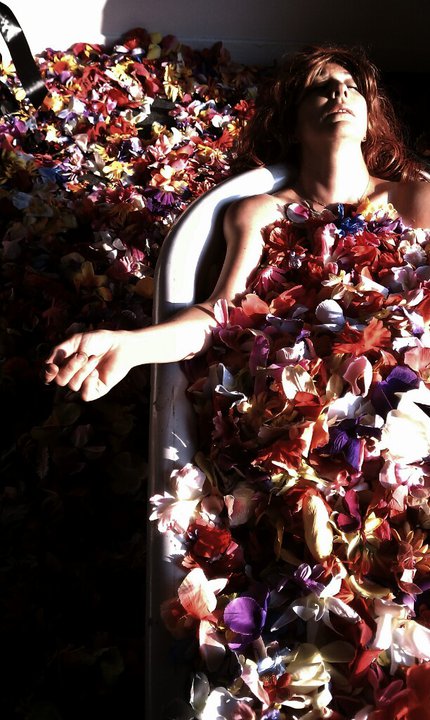
Susan Lenz
Textile and Installation Artist Susan Lenz completed three artist residencies and scholarship programs this year including Studios Midwest, in Galesburg, IL, The Studios at Key West in Key West, FL, and the Hot Springs National Park Artist Residency at Hot Springs, AR. She was the recipient of the SC Palmetto Hands Juried Fine Craft Exhibition Best of Show award in North Charleston, SC and the Niche Award 2011 for fibers in the decorative category winner by Niche Magazine in Baltimore, MD. Her exhibitions include the following: the 2012 Quilt Festival at the la Conner Quilt and Textile Museum in La Conner, WA; a solo show, Fiber Architecture: Buildings in Stitches at Fredericksburg Center for the Creative Arts in VA; an invitational show, Decision Portraits at Quilt, Inc.’s International Quilt Show in Houston; Lowell Art Quilt 2012 at the Brush Gallery in Lowell, MA; Material Voice at Ayers Loft Gallery in Lowell, MA; Small Stories at Urban Alchemist in Brooklyn, NY; a solo show, Sun and Sand at Frame of Mind, in Columbia; an invitational show, Narrative Threads at the Page-Walker Gallery in Cary, NC; I’m Not Crazy, Studio Art Quilt Associates traveling exhibition; La Grange National XXVII in LaGrange, GA; a solo show, Last Words, at the Imperial Center, Rocky Mount, NC; the 33rd Annual Contemporary Crafts at the Mesa Arts Center in Mesa, AZ; an invitational show, Meet the Designers at the Columbia Museum of Art; Crafts National at Mulvane Art Museum in Topeka, KS, Art and the Human Form: Concept, Costume & Beyond, Blue Door Gallery, Yonkers, NY; Textiles in a Tube 2 at Riverworks Gallery in Greenville, SC; the SC Palmetto Hands Fine Craft Exhibition in North Charleston; the 2012 Exhibition at McKissick Museum; a solo show, Last Words at Vision Gallery in Chandler, AZ; an invitational show, The Winter Show at Green Hill Center in Greensboro, NC; Art of Fiber at Workhouse Art Center in Lorton, VA; Fine Crafts at Fredericksburg Creative Center for the Arts in VA; SAQA Layers of Memories, Studio Art Quilt; National Fiber Directions Exhibition 2011, Wichita, KS; Tapps Center for the Arts window installation, Two Hours at the Beach; an invitational show, Green: The Color and the Cause at the Textile Museum in Washington, DC; National Juried Quilt Exhibit at Delaplane Visual Arts Center in Frederick, MD; Unearth: A Celebration of Naturally Inspired Art at Saluda Shoals in Columbia; and the National Heritage Quilt Show at McMinn County Living Heritage Museum in Athens, TN.
~~~
Theatre

Chad Henderson
One of Columbia's youngest professional directors, Chad Henderson has helmed six shows, all coincidentally musicals, in the past year at three of the area's major theatres: John and Jen at Workshop Theatre, Pinkalicious - The Musical (which was revived later in the season after selling out 100% of its performances) at Columbia Children's Theatre, and Spring Awakening, Passing Strange, Avenue Q, and Next to Normal, all at Trustus Theatre. Additionally, he represented the Midlands via a residency at The Studios of Key West in Florida, where he directed the 24-hour theatre festival "One Night Stand." As an actor, he was seen in The Great American Trailer Park Musical at Trustus, as well as in training scenarios for law enforcement and counseling professionals in SC, MT and NM.

Vicky Saye Henderson
Vicky Saye Henderson has been seen in five stage productions in the last year: Andrew Lippa's Wild Party (as Queenie, the tortured showgirl) at Workshop Theatre, and at Trustus Theatre Next to Normal (as Diana, the bipolar wife and mom) Spring Awakening (all adult females), The Great American Trailer Park Musical (as Betty) and Almost an Evening (multiple roles.) Additionally she acted in two staged readings of plays at Trustus: Southern Discomfort and Satan in High Heels. A SC Arts Commision-approved teaching artist, she has worked with numerous schools, colleges, churches, businesses and individuals, offering specialized courses in theatre arts, improvisation, and professional development. Her improv and sketch comedy training program for youth, ReWired, is in its 6th year at Workshop Theatre, and she is director for drama ministries at St. Andrews Lutheran Church. She also appeared in two film projects, Lola's Prayer and Taken In, which were screened at three film festivals, including Columbia's Indie Grits Festival.

Shelby Sessler
A senior Music major concentrating in voice at USC, Shelby Sessler has performed diverse roles at four of Columbia's major theatres in the past year: the naive Pickles in The Great American Trailer Park Musical at Trustus Theatre, the titular tyke in Pinkalicious - The Musical at Columbia Children's Theatre, Vivienne the snooty antagonist in Legally Blonde at Workshop Theatre, and all three female roles (a German femme fatale, a forlorn Scottish farm wife, and a proper British lady) in Alfred Hitchcock's The 39 Steps at Town Theatre. Additionally she teaches voice in Workshop Theatre's Broadway Bound Program. Behind the scenes, Sessler worked as Assistant Stage Manager for the SC Shakespeare Co.'s spring production of The Complete Works of William Shakespeare (Abridged.)

